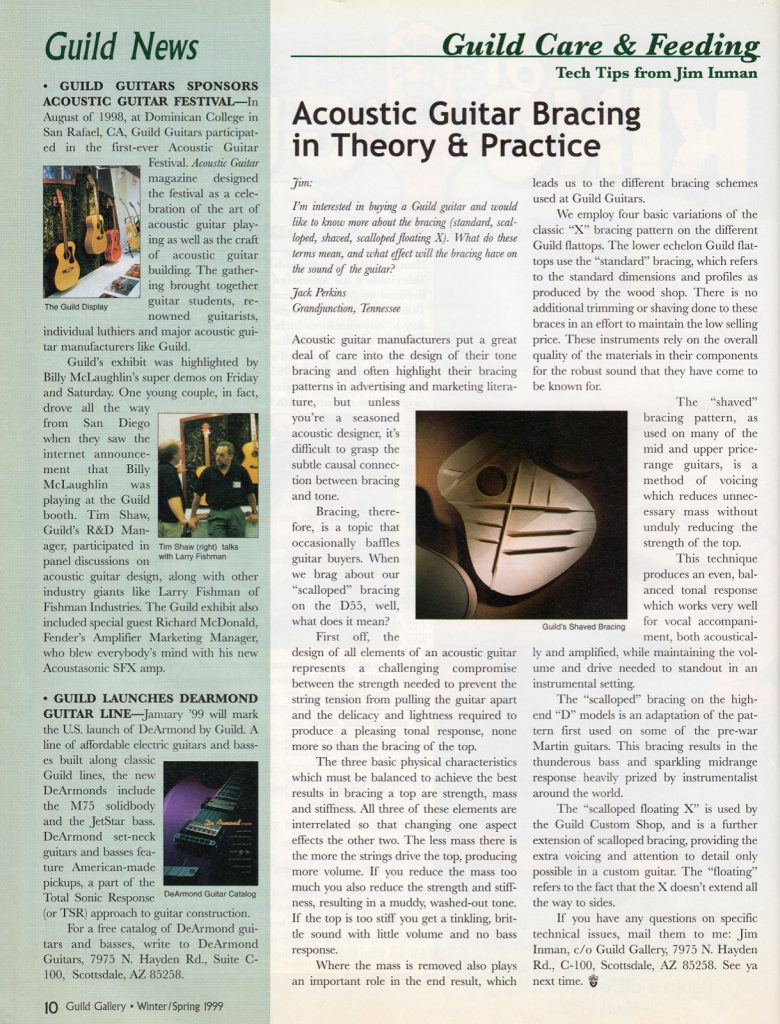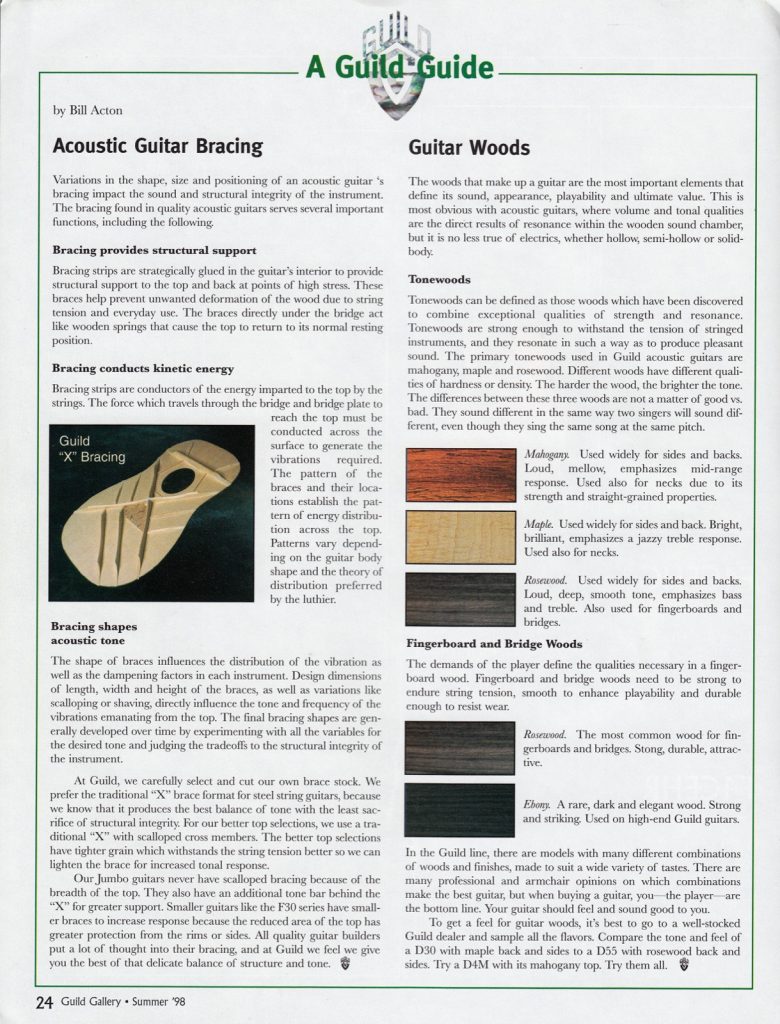Thanks for posting adorshki -- I'm intrigued by this. (Maybe I'm just easiy intrigued?!)
Since how braces are patterned (ladder-braced; A-braced; X-braced, etc), where they're postioned, and how they're treated (shaved; scalloped, etc.) is a big part of what makes a guitar sound the way it does (sayeth the experts), the fact that Guild varied the way they braced their mohogony topped guitars versus their other tops, is -- well, interesting.
Before this thread started, I'd never noticed the top bracing on my D15 didn't extend under the kerfing. I'd assumed the top material being mahogony was the only contributing factor to how these guitars sounded.
Anyway, I'll be sticking my dental mirror down the throats of my other Guilds as I take them out for their exercises over the next few weeks.


